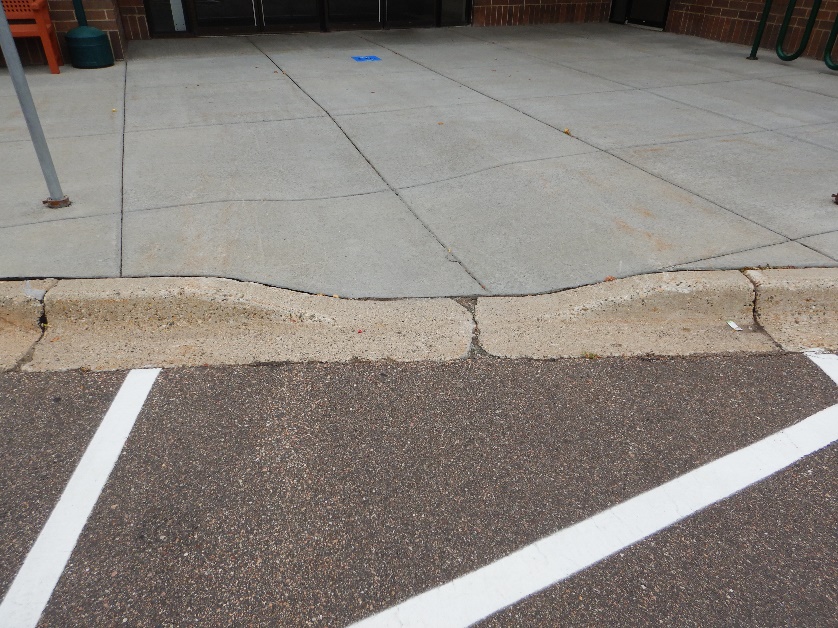These photographs illustrate two common problems found on curb ramps. First, the side flares are not at a 1:10 slope. We find that it is common to see cement finishers put in ramp side slopes in a manner similar to driveway curb returns. Side slopes for curb ramps where a pedestrian could be expected to cross the ramp, must be a 1:10 slope to minimize a tripping hazard.
Secondly the finishers created a lip, albeit slight, that is greater than ½-inch. This qualifies as a separate ramp. If the property was involved in an Americans with Disabilities (ADA) lawsuit, the plaintiff’s expert would place their level hard against the small “ramp” and say the curb ramp was noncompliant by a measured percent greater than the allowed 8.33%.
The correction for both situations is complete replacement. It can be tempting to only replace the side flares or to grind down the lip. First of all, this remedial work will have a poor appearance. Secondly, small concrete repairs are not easily and cleanly completed and the new joints between the ramps and repairs could create their own compliance issues. A complete replacement will have a better chance at being accessible and look good.
Zimmer Consultants photographs

